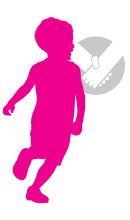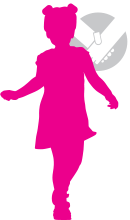Component 2: Self-Awareness and Competence
Standard 2.a: Children develop an awareness of themselves as an individual with thoughts, feelings, and perspectives that may differ from others.
By the following age ranges, children typically, for example:
- Explore their own hands and feet
- Demonstrate a recognition of themselves in a mirror
- Respond to their own name

- Explore various play materials and show preferences for specific books, toys, or food
- Demonstrate displeasure when unable to exert influence on events
- Indicate their dislike by saying “no” or through some other method (e.g., shaking their head or turning their head/body away)
- Make simple choices

- Recognize some body parts (e.g., pointing to eyes, ears, or nose when asked)
- Refer to themselves by name
- Use “me” and “mine” in reference to themselves and to objects
- Express preferences for certain toys or objects
- Enjoy playing alone for short periods of time
- Try to do some things without help

- Become aware of and asserts ownership (e.g., “This is mine”; and “that is yours.”)
- Demonstrate preferences and choices for people, toys, or activities
- Recognize a picture of themselves (e.g., by pointing or saying “me”)
- Describe some personal characteristics (e.g., hair color)
- Provide their first and last names when asked

- Differentiate themselves from others based on characteristics they use to describe themselves, such as “shy” or “smart.”
- Differentiate themselves from others in terms of specific abilities (e.g., “I am a fast runner,” or “I am a good climber.”)
- Describes physical attributes among peers and adults
- Has a clear sense of people, self, and those who are different

- Describe own and others’ personal characteristics (e.g., “My hair is red; your hair is black.”)
- Understand that other people have different physical characteristics as well as different thoughts, beliefs, ideas, and feelings.
- Demonstrate an awareness of their own likes and preferences

Standard 2.b: Children develop the confidence to complete an action successfully or independently.
By the following age ranges, children typically, for example:
- Demonstrate interest in objects or people
- Accept new toys or objects with interest
- Reach for objects of interest
- Focus on objects and people of interest for longer periods of time

- Show pleasure at their own actions
- Show attachment to or preference for specific toys
- Ask for similar activities to be repeated over and over
- Attempt to perform self-care activities independently of adult help
- Recognize their ability to influence their surroundings (e.g., standing on a table or feeding chair to indicate hunger to an adult)

- Alternate between doing things independently and wanting help or comfort
- Repeat activities and words and songs over and over
- Participate in solitary pretend play (e.g., wearing hats, talking on a phone)
- Help with simple tasks (e.g., picking up toys)

- Demonstrate joy in their own accomplishments (e.g., throwing away a napkin, flushing a toilet)
- Initiate new activities and explore new materials
- Demonstrate interest and pride in handling personal care routines (e.g., removing coat) with minimal assistance

- Choose materials and activities
- Participate in new experiences with confidence and independence (e.g., selecting more challenging puzzles)

- Resist help and demonstrate a sense of competence (e.g., insisting on dressing themselves, pouring their own juice, etc.)
- Stay with a task until it is completed
- Move between independence and dependence in a way that meets their needs for both and that is appropriate for the circumstances

